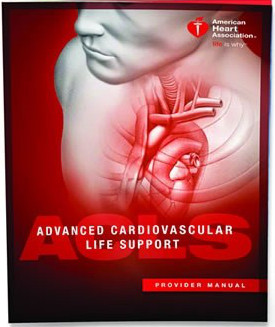Nervous about the Mega Code in your upcoming ACLS class?
By Clare Hunter, RN, OHN, BSc, BA, who has been a nurse forever and CPR Seattle ACLS Instructor since 2016.
If you’re anxious about the mega code in the ACLS class, then you’re in good company - because most students are.
Even regular providers, for whom ACLS is a part of their everyday practice, admit to feeling a twinge of apprehension. In preparing to write this blog piece I cornered as many of my ACLS certified co-workers as I could to get their unedited opinions on, and experience of, The Mega Code. Happily, they were more than willing to be forthcoming and I was regaled with an array of anecdotes, some painful, some amusing, some mundane, and one person actually got tears in their eyes at the recollection of an excruciating classroom mega code fail – oh, wait a minute, that was me! Having evaluation anxiety as a student was a difficult experience which has nevertheless proved very useful to me as an instructor, because I know exactly how it feels.
Here are some of the things my co-workers said about the ACLS mega code practice:
- “Oh, I had total brain-freeze, but they talked me through it”

- “It definitely gets easier with practice, and it’s great if you have a sympathetic instructor”.
- “I like the hands-on training and I think the simulations have got better – there’s more interaction”.
- “They want you to pass, and I never felt that I was hung out to dry”.
- “I like to participate as much as possible – throw myself in front rather than stand quietly at the back”.
The purpose of the mega code is to test you, and test you it will. It comes at the end of day two in the initial ACLS class, and at the end of day one for ACLS renewal students, right about the time that your brain is saturated and just before we hand you a 50 question written test.
ACLS certification is a requirement for providers in a diverse range of clinical practice; RN’s, pharmacists, medics, respiratory therapists, physicians and physician assistants, nurse practitioners and dentists. Not everyone who undertakes ACLS training will meet a real live situation in their career and even fewer will ‘lead’ a code, but the mega code practice is currently the only way that the AHA has come up with to test, in a practical manner, the skills you’ve learned in class.
It’s a highly artificial situation, conducted in the classroom using a plastic dummy with no legs, a bunch of drugs that you won’t draw up, an ETT with a deflated balloon, and a defibrillator/monitor that possibly doesn’t even look like the one you have in your clinical area. The strong visual cues provided by a live patient are absent, and you’re put on the spot in a way that would seldom occur ‘in real life’. Nevertheless, the mega code practice will give you a sense of the structure, energy, urgency, team dynamics, and your own stress response to an ACLS scenario, and in that respect it’s a powerful tool.
Most ACLS classes have one student willing to step forward to be the first leader in the mega code practice, to “get it out of the way”, and one student who hovers at the back of the group, waiting till the end.
Confident students are driven by their own verve and brio, but it’s the less experienced whose brains do a hiccup; muddle up their A’s and inadvertently order Amiodarone for SVT, or Adenosine for refractory VF, who turn on the pacer when they really mean to put the defibrillator in sync mode. If that is you then please be assured that you’re not the first student to do it and you’ll certainly not be the last, and some of your team members will be breathing a sigh of relief that they didn’t do it first.
At the end of each practice, without exception, the face of the person leading the mega code team relaxes with perceptible relief.
 Instructors are able to make the distinction between those students who know the material and just can’t get the words out, and students who might not have had time to prepare. My wish as an instructor is that the mega code practice will encourage you to anticipate and adjust; to re-examine the code practice in your current work setting, correct your knowledge deficiencies, and above all, to value your strengths.
Instructors are able to make the distinction between those students who know the material and just can’t get the words out, and students who might not have had time to prepare. My wish as an instructor is that the mega code practice will encourage you to anticipate and adjust; to re-examine the code practice in your current work setting, correct your knowledge deficiencies, and above all, to value your strengths.
I hope that you’ll return to your department and look, really look at your defibrillator, rummage around and familiarize yourself with the code cart/box, and from time-to-time refresh your knowledge of the ACLS algorithms – no need to wait the two years till your ACLS renewal is due.
What tips can I give to help you through the mega code practice?
Well, knowing the algorithms and the rhythms is the best preparation. Read the book, thoroughly, and take the time to review the algorithms regularly in the weeks, or days, leading up to your course. The AHA produces laminated fold-out cards of the algorithms, which are an excellent tool. Carry them around at work in the back pocket of your scrubs, stuff them in your wallet, or dump them on the passenger seat of your car. Pick them up while stationary at the traffic-lights or pull them out of your pocket to review in a quiet moment at work, or on your lunch-break. If you review each algorithm for a minute or so each day I can assure you that within a relatively short period of time you’ll have them memorized.
It’s a really nice feeling to get to the end of your mega code test and think, “Phew! That went okay.” I look forward to seeing you at CPR Seattle so I can help you prepare for a successful mega code!"
Enjoy our blog? follow us on Facebook.
Published on January 24, 2017
